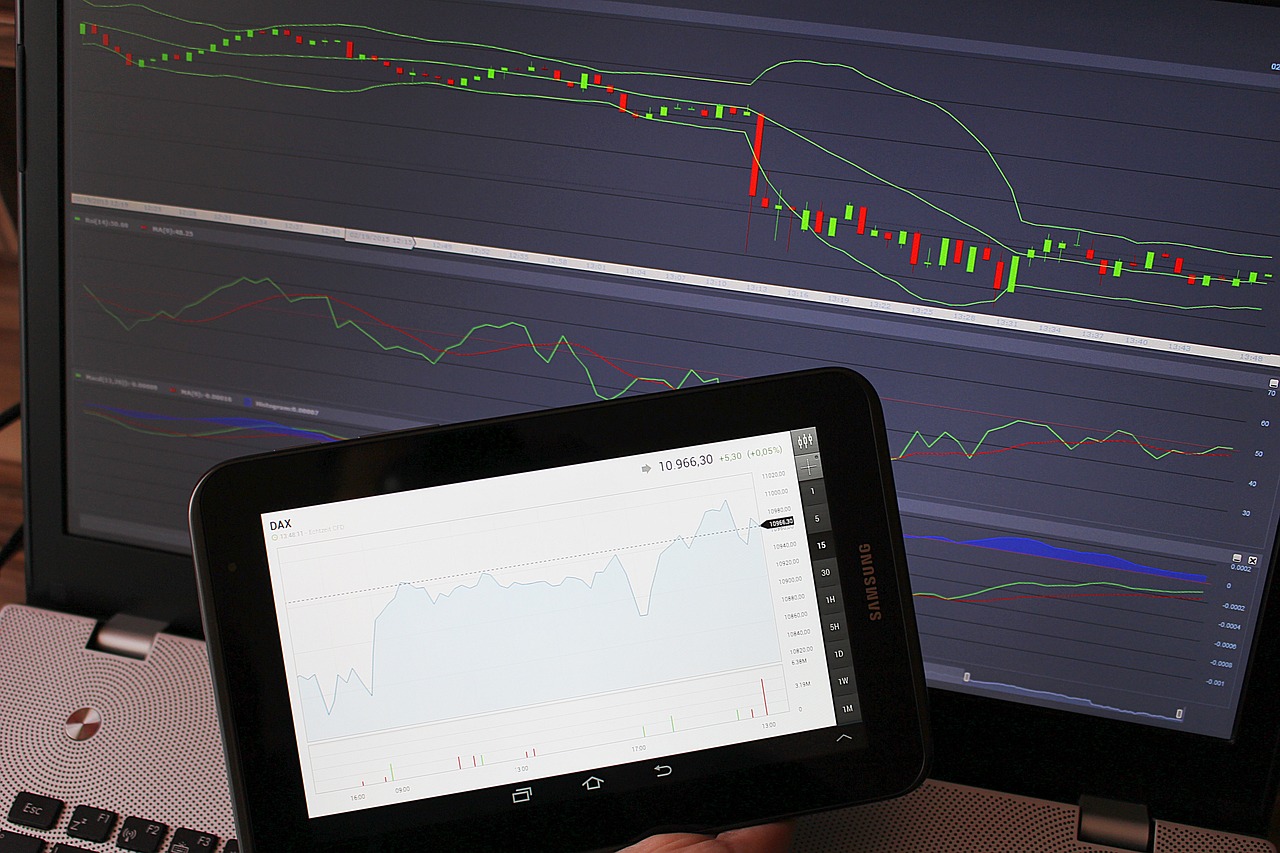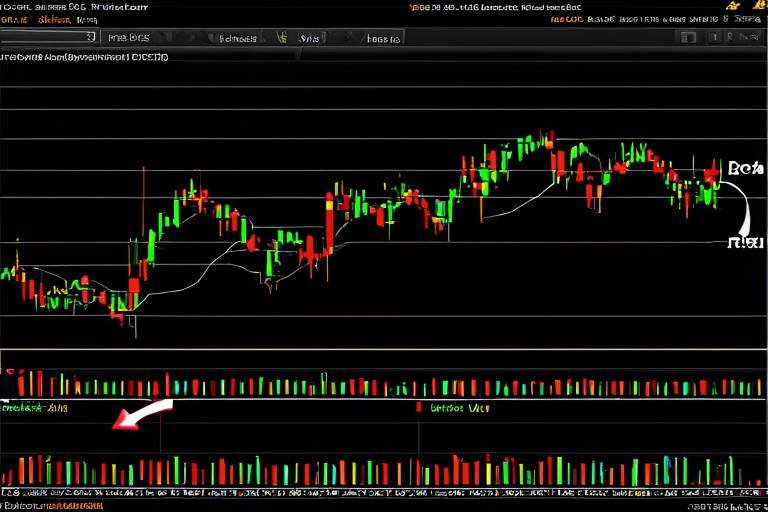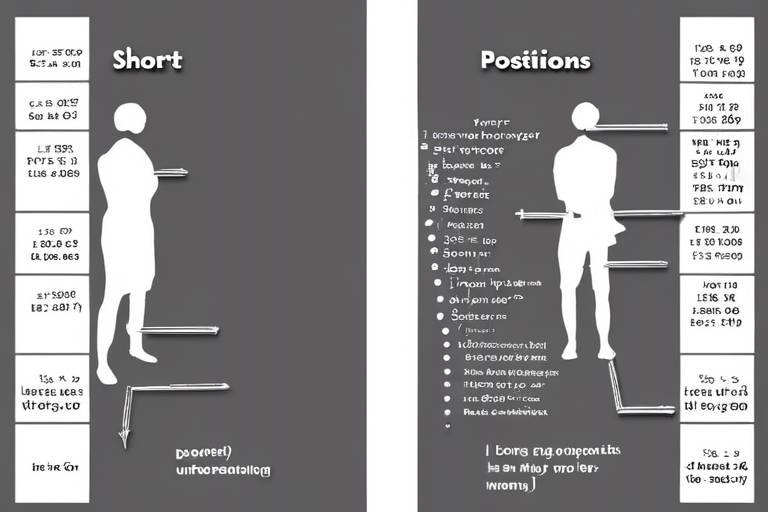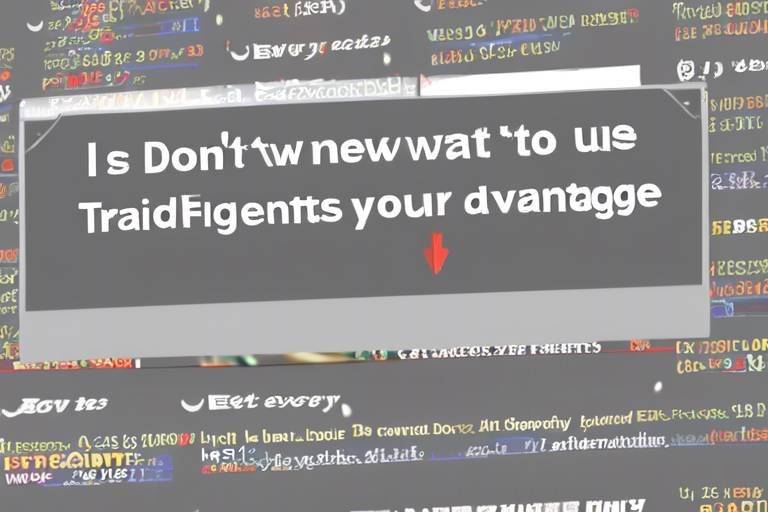Using Fibonacci Retracement in Trading Strategies
Have you ever wondered how some traders seem to have a sixth sense when it comes to predicting market movements? One of their secret weapons is the Fibonacci retracement tool. This powerful technical analysis tool helps traders identify potential price reversals and key support or resistance levels. By understanding and utilizing Fibonacci retracement in their trading strategies, traders can make more informed decisions, ultimately enhancing their chances of success in the market.
At its core, Fibonacci retracement is all about recognizing patterns. It uses horizontal lines to indicate where the price is likely to reverse before continuing in its original direction. Imagine standing at the edge of a cliff, looking down at the waves crashing against the rocks below. Just as you can anticipate where the waves will hit next based on their past behavior, traders can predict price movements by analyzing historical data and applying Fibonacci levels. These levels serve as a roadmap, guiding traders through the often turbulent waters of the financial markets.
But why are Fibonacci levels so important? The answer lies in their ability to highlight potential reversal points. When traders spot these levels, they can make educated predictions about where the price might bounce back or face resistance. This insight is invaluable, especially in a world where market sentiment can shift in the blink of an eye. By incorporating Fibonacci retracement into their trading strategies, traders can enhance their overall approach and make more calculated moves.
Now, let's dive into how to calculate these Fibonacci levels. To do this, traders typically identify a significant price movement, whether it be a bullish or bearish trend. From there, they apply the key Fibonacci ratios—23.6%, 38.2%, 50%, 61.8%, and 100%—to determine potential retracement levels. These levels can act as entry or exit points, allowing traders to position themselves strategically within the market. Think of it like a treasure map; the Fibonacci levels are the 'X' that marks the spot for potential profit.
Understanding the significance of Fibonacci levels is crucial for any trader. Each ratio represents a potential reversal zone, and by recognizing these zones, traders can better plan their trades. For instance, if a stock retraces to the 61.8% level after a significant move, it may indicate a strong support level where buyers could step back in. This is where the magic happens—traders can capitalize on these movements, riding the wave of momentum to maximize their gains.
Calculating Fibonacci levels is straightforward but requires a keen eye for significant price movements. Here’s a simple breakdown:
- Identify the highest and lowest points of a price movement.
- Calculate the vertical distance between these points.
- Multiply this distance by the Fibonacci ratios to find retracement levels.
For example, if a stock moves from $100 to $200, the distance is $100. Applying the 61.8% ratio, you would calculate $100 * 0.618 $61.80. Subtracting this from the high of $200 gives you a potential retracement level of $138.20. This level can be monitored for possible entry points.
Here are the main Fibonacci ratios used in trading:
| Fibonacci Ratio | Potential Reversal Level |
|---|---|
| 23.6% | Minor retracement |
| 38.2% | Moderate retracement |
| 50% | Psychological level |
| 61.8% | Major retracement |
| 100% | Full retracement |
One of the best ways to enhance the effectiveness of Fibonacci retracement is by combining it with other technical indicators. For example, using moving averages or the Relative Strength Index (RSI) alongside Fibonacci levels can provide stronger trading signals. This combination allows traders to confirm their analysis and make more reliable predictions. It’s like having a safety net; it adds an extra layer of security to your trading strategy.
Traders often use Fibonacci retracement in various strategies, such as:
- Trend Continuation Trades: When the price retraces to a Fibonacci level in the direction of the trend, traders can enter a position anticipating that the trend will continue.
- Reversal Trades: If the price approaches a Fibonacci level and shows signs of reversal, traders may take a position against the trend, betting that the price will bounce back.
These strategies can help traders effectively capitalize on market movements, but they require careful analysis and a solid understanding of market dynamics.
While Fibonacci retracement is undoubtedly a valuable tool, it’s essential to recognize its limitations. Markets are unpredictable, and relying solely on Fibonacci levels can lead to false signals. Traders must be aware that prices can break through these levels without reversing, which can result in potential losses if not managed properly.
Learning to identify false signals is crucial for successful trading. Sometimes, the price may approach a Fibonacci level, but instead of bouncing back, it continues to move in the opposite direction. This scenario can be frustrating, but by incorporating additional indicators and analysis, traders can mitigate the risks associated with false signals.
Different market conditions, such as trending markets or consolidations, can impact the effectiveness of Fibonacci retracement levels. In a strongly trending market, Fibonacci levels may act as mere speed bumps rather than significant reversal points. Traders should adapt their strategies according to current market conditions to maintain profitability and avoid unnecessary losses.
Q: What is Fibonacci retracement?
A: Fibonacci retracement is a technical analysis tool that identifies potential support and resistance levels based on key Fibonacci ratios.
Q: How do I calculate Fibonacci levels?
A: Identify the highest and lowest points of a price movement, calculate the distance, and apply Fibonacci ratios to find retracement levels.
Q: Can Fibonacci retracement be used in any market?
A: Yes, Fibonacci retracement can be applied to various financial markets, including stocks, forex, and cryptocurrencies.
Q: What are the common Fibonacci ratios?
A: The main Fibonacci ratios are 23.6%, 38.2%, 50%, 61.8%, and 100%.

Understanding Fibonacci Retracement
Fibonacci retracement is more than just a fancy term thrown around in trading circles; it’s a powerful tool that can significantly enhance your trading strategies. At its core, Fibonacci retracement involves drawing horizontal lines on a price chart to indicate areas where the price might reverse or find support and resistance. Imagine you're climbing a mountain, and every time you reach a certain height, you stop to catch your breath. Those stopping points represent Fibonacci levels, helping you gauge where the price might take a breather before continuing its journey.
The essence of Fibonacci retracement lies in the Fibonacci sequence, a series of numbers where each number is the sum of the two preceding ones, starting from 0 and 1. This sequence leads to ratios that traders use to predict potential price movements. For instance, the ratios of 23.6%, 38.2%, 50%, 61.8%, and 100% are derived from this sequence and are crucial in identifying potential reversal points in a market. These levels act like magnets for price action, drawing the market towards them, and can often indicate where traders might want to enter or exit a position.
To put it simply, when a stock, currency, or commodity experiences a significant price movement, Fibonacci retracement levels can help traders identify where the price might pause or reverse. This makes it easier for traders to make informed decisions. For example, if a stock has surged from $100 to $150, a trader might look at the Fibonacci retracement levels to determine where the price could retrace before continuing its upward trend. These levels can provide vital clues about potential buying or selling opportunities.
To visualize this concept better, consider the following table that outlines how Fibonacci levels are typically plotted on a price chart:
| Price Movement | Fibonacci Level | Potential Action |
|---|---|---|
| $100 to $150 | 23.6% - $138.20 | Potential support level |
| $100 to $150 | 38.2% - $130.90 | Potential support level |
| $100 to $150 | 50% - $125.00 | Potential support level |
| $100 to $150 | 61.8% - $121.80 | Potential support level |
Using Fibonacci retracement can feel like having a map on your trading journey. It helps you navigate through the often turbulent waters of the financial markets by providing a clearer picture of where prices might head next. However, like any tool, it’s essential to use it wisely and not rely solely on it. A good trader knows that combining Fibonacci levels with other indicators can lead to even better insights. Think of it as having a GPS in your car; it’s handy, but you still need to keep your eyes on the road!

The Importance of Fibonacci Levels
When it comes to trading, understanding market movements is akin to reading a map before embarking on a journey. This is where Fibonacci levels come into play, acting as crucial markers that help traders navigate the often turbulent waters of financial markets. These levels are derived from the Fibonacci sequence, a series of numbers where each number is the sum of the two preceding ones. This mathematical phenomenon reveals itself in various aspects of nature and, surprisingly, in market behavior as well.
Traders utilize these Fibonacci levels to identify potential reversal points, making educated predictions about price movements. Imagine you're at a crossroads: the Fibonacci retracement levels serve as signposts, guiding you toward potential support and resistance areas. By pinpointing these levels, traders can enhance their decision-making process, allowing for more strategic entries and exits in the market.
One of the standout features of Fibonacci levels is their ability to provide a sense of context in an otherwise chaotic trading environment. For instance, if a stock has retraced to the 61.8% Fibonacci level and shows signs of bouncing back, this could indicate a strong support level. Conversely, if the price fails to hold at this level and breaks through, it may signal a continuation of the downward trend. This duality of insight is what makes Fibonacci levels indispensable for traders.
Moreover, the importance of Fibonacci levels extends beyond individual trades; they also play a significant role in market psychology. Many traders are aware of these levels, which creates a self-fulfilling prophecy. When a significant number of traders place buy or sell orders around these Fibonacci levels, it can lead to increased volatility and price movements, further validating the effectiveness of these retracement levels.
To illustrate the significance of Fibonacci levels, consider the following table that outlines the key Fibonacci ratios and their typical implications in trading:
| Fibonacci Ratio | Typical Implication |
|---|---|
| 23.6% | Minor support/resistance level |
| 38.2% | Potential reversal zone |
| 50% | Psychological level, often significant |
| 61.8% | Strong support/resistance level |
| 100% | Full retracement |
In summary, the importance of Fibonacci levels in trading cannot be overstated. They serve as vital tools for identifying potential market reversals, enhancing decision-making, and understanding market psychology. By incorporating Fibonacci retracement levels into their trading strategies, traders can navigate the complexities of the market with greater confidence and precision.
- What are Fibonacci levels?
Fibonacci levels are horizontal lines that indicate areas of support or resistance at key Fibonacci ratios, helping traders predict potential price movements. - How do I calculate Fibonacci levels?
To calculate Fibonacci levels, identify a significant price movement and apply Fibonacci ratios (23.6%, 38.2%, 50%, 61.8%, and 100%) to determine potential retracement levels. - Can Fibonacci levels be used with other indicators?
Yes, combining Fibonacci levels with other technical indicators like moving averages or RSI can strengthen trading signals and provide a more comprehensive analysis. - Are Fibonacci levels foolproof?
No, while they are valuable tools, Fibonacci levels are not infallible. Traders must be aware of market conditions and potential false signals.

How to Calculate Fibonacci Levels
Calculating Fibonacci levels is a straightforward yet essential process that every trader should master. It begins with identifying a significant price movement, which can be either a bullish or bearish trend. This initial step is crucial because it sets the foundation for determining the key Fibonacci retracement levels that will guide your trading decisions. Once you've identified this price movement, you can apply the Fibonacci ratios to find potential retracement levels.
To calculate these levels, you first need to measure the distance of the significant price movement. For example, if a stock rises from $10 to $20, the total movement is $10. Next, you apply the Fibonacci ratios—23.6%, 38.2%, 50%, 61.8%, and 100%—to this movement. Here’s how you do it:
| Fibonacci Ratio | Calculation | Retracement Level |
|---|---|---|
| 23.6% | 20 - (10 * 0.236) | $17.64 |
| 38.2% | 20 - (10 * 0.382) | $16.18 |
| 50% | 20 - (10 * 0.5) | $15.00 |
| 61.8% | 20 - (10 * 0.618) | $13.82 |
| 100% | 20 - (10 * 1) | $10.00 |
Once you have calculated these levels, you can plot them on your trading chart. These horizontal lines will serve as potential support or resistance levels where the price may reverse or consolidate. It’s important to remember that these levels are not guarantees but rather probabilities. Traders often look for additional confirmation from other indicators, such as candlestick patterns or moving averages, to strengthen their trading decisions.
In summary, calculating Fibonacci levels involves identifying a significant price movement, applying the Fibonacci ratios to find retracement levels, and plotting these levels on your chart. This technique can provide valuable insights into potential price reversals, helping traders make more informed decisions.
- What is the best time frame to use Fibonacci retracement? Fibonacci retracement can be applied across various time frames, but many traders find it most effective on daily or weekly charts for longer-term trades.
- Can Fibonacci retracement levels work in any market? Yes, Fibonacci retracement levels can be used in any market, including stocks, forex, and cryptocurrencies, although their effectiveness may vary based on market conditions.
- How do I know if a Fibonacci level is significant? The significance of a Fibonacci level can often be gauged by observing how many times the price has reacted to that level in the past. The more touches it has, the more significant it may be.

Key Fibonacci Ratios
When diving into the world of Fibonacci retracement, understanding the is crucial for any trader. These ratios are derived from the Fibonacci sequence, which is a series of numbers where each number is the sum of the two preceding ones. The most commonly used ratios in trading are 23.6%, 38.2%, 50%, 61.8%, and 100%. Each of these levels serves as potential reversal zones, indicating where price movements may pause or change direction.
Let's break down these ratios to see how they apply in the trading landscape:
| Fibonacci Ratio | Significance |
|---|---|
| 23.6% | This level often indicates a minor retracement; traders might see it as a weak support or resistance level. |
| 38.2% | A more significant retracement level, often watched closely by traders for potential reversals. |
| 50% | While not a Fibonacci number, this level is widely used in trading as it often represents a psychological barrier. |
| 61.8% | Considered the golden ratio, this level is one of the most critical Fibonacci levels, often indicating strong support or resistance. |
| 100% | This level represents the complete retracement of the price movement, marking the end of the retracement phase. |
Utilizing these ratios effectively can lead to improved trading decisions. For instance, if a trader sees the price approaching the 61.8% Fibonacci level after a significant uptrend, they might prepare for a potential reversal. Conversely, if the price breaks through this level, it could signal a continuation of the downtrend, prompting traders to adjust their strategies accordingly.
It's important to remember that while these Fibonacci ratios provide valuable insights, they should not be used in isolation. Combining these levels with other technical indicators can enhance their effectiveness, allowing traders to make more informed decisions. For example, if the price approaches the 38.2% level and coincides with a moving average, the likelihood of a reversal may be higher, thus strengthening the trading signal.
In summary, understanding and applying these key Fibonacci ratios can significantly enhance a trader's ability to identify potential reversal points and make smarter trading decisions. As with any trading strategy, practicing patience and discipline is essential to navigate the ever-changing market landscape.
- What is Fibonacci retracement used for? Fibonacci retracement is primarily used to identify potential support and resistance levels in a market, helping traders predict price movements.
- Can Fibonacci levels guarantee success in trading? No, while Fibonacci levels are valuable tools, they do not guarantee success and should be used alongside other indicators and analysis methods.
- How do I apply Fibonacci retracement in my trading strategy? Identify a significant price movement, apply the Fibonacci ratios to find potential retracement levels, and watch for price action around these levels to make trading decisions.

Using Fibonacci with Other Indicators
Integrating Fibonacci retracement levels with other technical indicators can significantly enhance your trading strategy. Think of it as assembling a powerful toolkit; each tool has its purpose, and together, they can provide a clearer picture of market conditions. By combining Fibonacci levels with indicators like Moving Averages or the Relative Strength Index (RSI), traders can create a multi-faceted approach to analyzing price movements.
For instance, when a Fibonacci level aligns with a key moving average, it can serve as a stronger signal for potential price reversals. Imagine the 50% Fibonacci retracement level coinciding with the 200-day moving average. This convergence creates a robust support or resistance zone, increasing the likelihood of a price bounce or breakthrough. Traders often refer to this as a "confluence" of indicators, where multiple signals point to the same market action.
Moreover, the RSI can help confirm the strength of a price movement. If the price approaches a Fibonacci level while the RSI indicates that the asset is overbought or oversold, traders can make more informed decisions. For example, if the price is nearing the 61.8% retracement level and the RSI shows an overbought condition, it may suggest a potential reversal is imminent. This combination not only enhances the accuracy of predictions but also provides a safety net against false signals.
To sum it up, using Fibonacci retracement in conjunction with other indicators can lead to more effective trading strategies. It’s like having a map and a compass; while the Fibonacci levels guide you on potential price paths, the other indicators help ensure you're heading in the right direction. This holistic approach can significantly improve your decision-making process in the fast-paced world of trading.
- What are Fibonacci retracement levels?
Fibonacci retracement levels are horizontal lines that indicate potential support and resistance levels based on the Fibonacci sequence. Traders use these levels to identify possible reversal points in the market.
- How do you calculate Fibonacci retracement levels?
To calculate Fibonacci levels, identify a significant price movement (either upward or downward), then apply the Fibonacci ratios (23.6%, 38.2%, 50%, 61.8%, and 100%) to determine potential retracement levels.
- Can Fibonacci retracement levels be used in all markets?
Yes, Fibonacci retracement can be applied to various markets, including stocks, forex, and commodities. However, its effectiveness may vary depending on market conditions.
- What should I do if the price breaks through a Fibonacci level?
When the price breaks through a Fibonacci level, it may indicate a strong trend continuation or a false signal. It's essential to use other indicators for confirmation before making trading decisions.

Common Trading Strategies with Fibonacci
When it comes to trading, understanding the nuances of Fibonacci retracement can significantly enhance your strategy. Many traders utilize Fibonacci levels to identify potential entry and exit points, allowing them to ride the waves of market movements effectively. One popular approach is the **trend continuation trade**, where traders look for opportunities to enter a position in the direction of the prevailing trend after a brief price retracement. For instance, if the market is in an uptrend and pulls back to a Fibonacci level—say 38.2%—traders might see this as a prime opportunity to buy, anticipating that the price will continue to rise.
Conversely, there’s the **reversal trade** strategy, which involves taking positions against the prevailing trend when the price reaches a Fibonacci retracement level. This approach can be particularly rewarding, albeit riskier, as it banks on the idea that the market will reverse direction. For example, if the price approaches the 61.8% retracement level after a downtrend, a trader might consider selling, expecting a bounce back up. However, this requires a keen sense of market conditions and often the use of additional indicators to confirm the reversal signal.
Incorporating Fibonacci levels into your trading strategy doesn't have to be a solo endeavor. Many traders find that combining Fibonacci retracement with other technical indicators, such as moving averages or the Relative Strength Index (RSI), can provide a more robust trading signal. For example, if a Fibonacci level aligns with a moving average or shows divergence on the RSI, it may suggest a stronger likelihood of a price reversal or continuation. This layered approach not only enhances the probability of successful trades but also adds an extra layer of confidence in your decision-making process.
Moreover, traders often analyze multiple time frames when applying Fibonacci retracement. By looking at higher time frames, such as daily or weekly charts, traders can identify significant levels that may not be apparent on lower time frames. This broader perspective can help traders spot key support and resistance zones, allowing them to make more informed decisions about where to enter or exit trades. Remember, the more confluence you have at a Fibonacci level—whether through price action, volume, or other indicators—the stronger that level becomes in your trading strategy.
Ultimately, the key to successfully employing Fibonacci retracement in your trading strategy lies in practice and adaptability. Each trader may develop their unique style and approach, so it’s crucial to backtest these strategies and adjust them according to market conditions. Market dynamics are constantly evolving, and what works today might not work tomorrow. Therefore, keeping a flexible mindset and continuously learning will enhance your trading prowess, making Fibonacci retracement a valuable tool in your trading arsenal.
- What is Fibonacci retracement?
Fibonacci retracement is a technical analysis tool that uses horizontal lines to indicate areas of support or resistance at key Fibonacci levels, helping traders predict potential price reversals.
- How do I calculate Fibonacci levels?
To calculate Fibonacci levels, identify a significant price movement and apply Fibonacci ratios (23.6%, 38.2%, 50%, 61.8%, and 100%) to find potential retracement levels.
- Can I use Fibonacci retracement with other indicators?
Absolutely! Combining Fibonacci retracement with other technical indicators like moving averages or RSI can enhance your trading signals and provide a more comprehensive market analysis.
- What are the limitations of Fibonacci retracement?
While Fibonacci retracement is a useful tool, it is not foolproof. Traders should be aware of potential false signals and market volatility that can affect its reliability.

Limitations of Fibonacci Retracement
While Fibonacci retracement is a valuable tool in the arsenal of traders, it is essential to recognize its limitations. Understanding these limitations can help traders avoid pitfalls and make more informed decisions. One of the primary challenges is the occurrence of false signals. Markets can often breach Fibonacci levels without reversing, leading traders to believe that a price reversal is imminent when, in fact, the trend may continue. This phenomenon can be particularly frustrating, especially for those who rely heavily on Fibonacci levels for their trading strategies.
Another significant limitation is the market volatility. In highly volatile markets, the price can swing dramatically, making it difficult for Fibonacci retracement levels to hold. For instance, during news events or earnings announcements, stocks may move unpredictably, causing traders to question the reliability of the Fibonacci levels. In such cases, the levels can become mere numbers on a chart rather than reliable indicators of future price action.
Moreover, Fibonacci retracement is often seen as a self-fulfilling prophecy. Many traders use these levels, which can lead to clusters of orders at specific price points. While this can create significant support or resistance, it also means that if the level is breached, it can lead to rapid price movements that may not reflect the underlying fundamentals of the asset. Therefore, traders must be cautious and avoid placing too much emphasis on these levels without considering other market factors.
Additionally, the effectiveness of Fibonacci retracement can vary depending on the market conditions. For example, in trending markets, Fibonacci levels may work well, but in sideways or consolidating markets, they can be less reliable. Traders should be aware of the prevailing market conditions and adjust their strategies accordingly. This adaptability is crucial for maintaining profitability and minimizing losses.
To summarize, while Fibonacci retracement can enhance trading strategies, it is not an infallible tool. Traders should be vigilant about the potential for false signals, the impact of market volatility, the self-fulfilling nature of the levels, and the varying effectiveness based on market conditions. By incorporating these considerations into their trading approach, traders can use Fibonacci retracement more effectively and improve their overall decision-making process.
- What is Fibonacci retracement? Fibonacci retracement is a technical analysis tool that utilizes horizontal lines to indicate potential support and resistance levels based on key Fibonacci ratios.
- How do I calculate Fibonacci retracement levels? To calculate Fibonacci levels, identify a significant price movement and apply Fibonacci ratios (23.6%, 38.2%, 50%, 61.8%, and 100%) to determine possible retracement levels.
- Can Fibonacci retracement be used in any market? Yes, Fibonacci retracement can be applied to various markets, including stocks, forex, and commodities, but its effectiveness may vary depending on market conditions.
- What should I combine with Fibonacci retracement for better results? Combining Fibonacci retracement with other technical indicators like moving averages, RSI, or MACD can provide a more comprehensive analysis and stronger trading signals.

Recognizing False Signals
In the world of trading, recognizing false signals is crucial for safeguarding your investments and enhancing your decision-making process. When using Fibonacci retracement levels, traders often encounter situations where price movements appear to respect these levels, only to break through them unexpectedly. This can lead to significant losses if you're not careful. So, how can you differentiate between genuine reversals and false signals?
First and foremost, it’s essential to understand that not all reactions at Fibonacci levels are created equal. Just because the price touches a Fibonacci level doesn’t mean it will reverse. It’s like a car approaching a stop sign; sometimes, it stops, and other times, it just rolls right through. To avoid getting caught in a false signal, traders should look for additional confirmation before making a trade.
One effective method is to combine Fibonacci retracement levels with other technical indicators. For instance, using the Relative Strength Index (RSI) or Moving Averages can provide a clearer picture of market sentiment. If the price hits a Fibonacci level and the RSI indicates that the market is overbought or oversold, this could be a stronger signal of a potential reversal. On the other hand, if the indicators suggest that the trend is still strong, it might be wise to wait for a more favorable setup.
Another key aspect to consider is the overall market context. If the market is experiencing high volatility or significant news events, Fibonacci levels may not hold as well. In such cases, traders should be extra cautious and consider using wider stop-loss orders to protect against unexpected price swings. Market conditions can greatly influence the effectiveness of Fibonacci retracement, and being aware of these factors can help you avoid falling into the trap of false signals.
To summarize, here are some tips to help you recognize false signals when using Fibonacci retracement:
- Always seek confirmation from other technical indicators.
- Pay attention to the overall market context and volatility.
- Use wider stop-loss orders in uncertain conditions.
- Be wary of emotional trading; stick to your strategy.
By implementing these strategies, you can significantly reduce the risk of acting on false signals and improve your trading outcomes. Remember, the market is full of surprises, and being prepared is your best defense!
1. What are Fibonacci retracement levels?
Fibonacci retracement levels are horizontal lines that indicate potential support or resistance levels based on the Fibonacci sequence. Traders use these levels to identify possible reversal points in the market.
2. How do I calculate Fibonacci levels?
To calculate Fibonacci levels, identify a significant price movement (a swing high and swing low) and apply the Fibonacci ratios (23.6%, 38.2%, 50%, 61.8%, and 100%) to determine potential retracement levels.
3. Can Fibonacci retracement levels be used with other indicators?
Absolutely! Combining Fibonacci retracement levels with other technical indicators like moving averages or RSI can provide a more comprehensive analysis and strengthen trading signals.
4. What are some limitations of using Fibonacci retracement?
While Fibonacci retracement is a valuable tool, it has limitations, including the potential for false signals and the influence of market volatility. It's essential to use it in conjunction with other analysis methods.
5. How can I avoid false signals when trading with Fibonacci?
To avoid false signals, look for confirmation from other indicators, be aware of market conditions, and consider using wider stop-loss orders to protect against unexpected price movements.

Market Conditions Affecting Fibonacci Retracement
When it comes to trading, understanding the market conditions is akin to knowing the weather before heading out for a hike. Just as a sunny day can make for a pleasant outing, favorable market conditions can enhance the effectiveness of Fibonacci retracement levels. However, when conditions are stormy, even the best strategies can falter. So, what exactly are these market conditions, and how do they impact Fibonacci retracement?
Firstly, let’s talk about trending markets. In a strong uptrend, Fibonacci retracement levels can serve as excellent support zones where traders might look to enter positions. Conversely, in a downtrend, these levels may act as resistance. For instance, if the price retraces to the 61.8% level during an uptrend, it could be a prime opportunity for traders to buy in, anticipating a continuation of the upward momentum. However, if the market is trending downward and hits the same level, traders might consider it a signal to sell or short the asset.
Next, we have consolidating markets. These are periods where the price moves sideways, and the market lacks a clear direction. In such scenarios, Fibonacci retracement levels can still provide valuable insights, but traders should exercise caution. Why? Because in a consolidation phase, the price may bounce off these levels multiple times before finally breaking out in either direction. This can lead to a series of false signals, which can be frustrating for traders who are looking for definitive price movements.
Another critical factor is market volatility. High volatility can cause prices to swing dramatically, making it difficult for Fibonacci levels to hold as support or resistance. Imagine trying to balance on a seesaw that’s constantly being pushed up and down; it’s challenging, right? In volatile markets, traders might find that prices breach Fibonacci levels, only to reverse shortly after. This erratic behavior necessitates a more cautious approach, where traders might consider using additional indicators to confirm their signals.
Lastly, news events can significantly influence market conditions. Economic reports, earnings announcements, or geopolitical developments can create sudden price movements that may render Fibonacci retracement levels less reliable. For example, if a company announces unexpected earnings, the stock price might plummet or soar, disregarding previously established Fibonacci levels. Thus, staying informed about upcoming news can help traders prepare for potential disruptions in their trading strategies.
In summary, recognizing how market conditions affect Fibonacci retracement is essential for any trader looking to enhance their strategy. By understanding the nature of trends, consolidations, volatility, and external news events, traders can better interpret Fibonacci levels and make more informed decisions. It’s about adapting to the market’s rhythm and using Fibonacci as a tool to navigate through its ups and downs.
- What is Fibonacci retracement?
Fibonacci retracement is a technical analysis tool that uses horizontal lines to indicate potential support and resistance levels based on the Fibonacci sequence.
- How do I calculate Fibonacci levels?
To calculate Fibonacci levels, identify a significant price movement and apply the key Fibonacci ratios (23.6%, 38.2%, 50%, 61.8%, and 100%) to find potential retracement levels.
- Can Fibonacci retracement be used in any market?
Yes, Fibonacci retracement can be applied in various markets, including stocks, forex, and cryptocurrencies, but its effectiveness may vary based on market conditions.
- What should I do if I encounter false signals?
It's essential to combine Fibonacci retracement with other technical indicators to confirm signals and reduce the risk of false entries or exits.
Frequently Asked Questions
- What is Fibonacci retracement?
Fibonacci retracement is a technical analysis tool that uses horizontal lines to indicate potential support and resistance levels based on key Fibonacci ratios. These levels can help traders identify possible price reversals in the market.
- How do I calculate Fibonacci levels?
To calculate Fibonacci levels, identify a significant price movement (either upward or downward) and apply the Fibonacci ratios (23.6%, 38.2%, 50%, 61.8%, and 100%) to determine potential retracement levels. This can assist in spotting entry and exit points for trades.
- Why are Fibonacci levels important in trading?
Fibonacci levels are crucial because they help traders make educated predictions about price movements. By identifying potential reversal points, traders can enhance their trading strategies and improve decision-making.
- Can I use Fibonacci retracement with other indicators?
Absolutely! Combining Fibonacci retracement levels with other technical indicators, such as moving averages or the Relative Strength Index (RSI), can strengthen your trading signals and provide a more comprehensive market analysis.
- What are the common trading strategies using Fibonacci?
Traders often employ strategies such as trend continuation trades or reversal trades when using Fibonacci retracement levels. These strategies help traders capitalize on market movements effectively.
- What are the limitations of Fibonacci retracement?
While Fibonacci retracement is a valuable tool, it has limitations, including the potential for false signals and the impact of market volatility. Understanding these limitations is essential for effective trading.
- How can I recognize false signals with Fibonacci retracement?
To recognize false signals, traders must be vigilant and learn to identify when the market breaks through Fibonacci levels without reversing. This can help prevent potential losses if not managed properly.
- How do market conditions affect Fibonacci retracement effectiveness?
Different market conditions, such as trending or consolidating markets, can impact the effectiveness of Fibonacci retracement levels. Traders should adapt their strategies accordingly to maintain profitability.



















